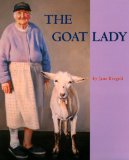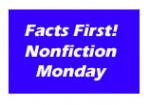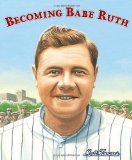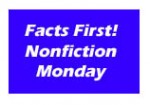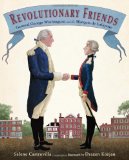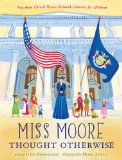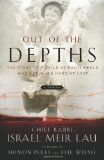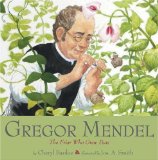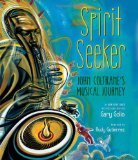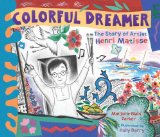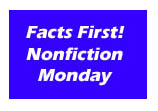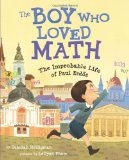 The Boy Who Loved Math
The Boy Who Loved Math
The Improbable Life of Paul Erdös
by Deborah Heiligman
pictures by LeUyen Pham
Roaring Brook Press, New York, 2013. 38 pages.
Starred Review
I’ve been looking forward eagerly to this book ever since Betsy Bird reviewed it. My hold came in today, and I am absolutely delighted! I need my own personal copy!
Now, I have a Master’s in Math. Having studied mathematics at UCLA, I’d like to think that my Erdös Number (explained in the book) is at least 4, maybe even 3. So I’m simply saying that I’m predisposed to like it.
But there’s so much here for anyone to like! Even without looking deeper (more on that later), the pictures are full of life and interest, fitting the lively descriptions of a little boy in love with numbers.
Here’s an example from page 6:
So Paul kept counting . . .
And thinking about numbers. One day, when he was 4, Paul asked a visitor when her birthday was. She told him.
What year were you born? he asked.
She told him.
What time?
She told him.
Paul thought for a moment.
Then he told her how many seconds she had been alive.
[The picture shows 1,009,152,358 in a speech bubble coming from the little boy. He’s with his Fräulein and a woman who could indeed reasonably be 32 — even the details are right!]
Paul liked that trick. He did it often.
She goes on to show Paul growing, full of movement, learning more, always thinking about numbers. I love the detail that the illustrator included at the end: “As a young boy, Paul was known to flap his arms when something particularly excited him. This behavior continued through his teen years, when his friends would often have to explain to passersby that there was nothing wrong with Paul — he was just thinking hard.” The illustrations reflect this, full of life and movement.
And the author makes a smooth transition from childhood antics to a stellar adult career:
By the time Paul was 20, he was already famous around the world for his math. People called him The Magician from Budapest.
But he still did not know how to . . .
do his laundry
or cook his food
or butter his bread.
That was not a problem.
He still lived at home and
Mama still did everything for him.
She goes on to explain his unusual, collaborative manner of living. He’d fly to different countries, staying with other mathematicians, and then he had a way of bringing out brilliance in others as well.
Now, like I said, I have a huge soft spot for mathematicians, and my heart simply warms at the picture of the big group of actual mathematicians (women included, yes indeed) discussing together number theory, combinatorics, the probabilistic method, and set theory.
So the first run through of the story is wonderful enough. A story showing a brilliant mathematician with an unconventional life who produced great mathematics and brought out brilliance in others. How many picture book biographies are there celebrating mathematicians? It simply makes me happy.
But look a little deeper. The illustrator’s note shows the incredible level of detail she worked into the illustrations. Early on, the numbers you see are amicable numbers, and worked into the buildings we have dihedral primes, good primes, Leyland primes, Mersenne primes, prime triplets, unique primes, palindromic primes, Ramanujan primes, and two-sided primes. Paul Erdös worked in graph theory, and there are diagrams in the illustrations including the famous Konigsburg Bridge problem and other famous graphs. She includes actual buildings from Budapest and actual distinguished mathematicians as well.
And this book achieved something picture book biographers aspire to — I am absolutely going to read more about Paul Erdös. But even better, this is a book that celebrates young number lovers and will encourage them that their passion is part of something grand.
I’m posting this tonight in honor of Nonfiction Monday, hosted today at 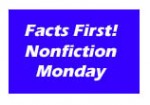
Buy from Amazon.com
Find this review on Sonderbooks at: www.sonderbooks.com/Childrens_Nonfiction/boy_who_loved_math.html
Disclosure: I am an Amazon Affiliate, and will earn a small percentage if you order a book on Amazon after clicking through from my site.
Source: This review is based on a library book from Fairfax County Public Library.
Disclaimer: I am a professional librarian, but I maintain my website and blogs on my own time. The views expressed are solely my own, and in no way represent the official views of my employer or of any committee or group of which I am part.
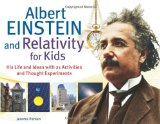 Albert Einstein and Relativity for Kids
Albert Einstein and Relativity for Kids